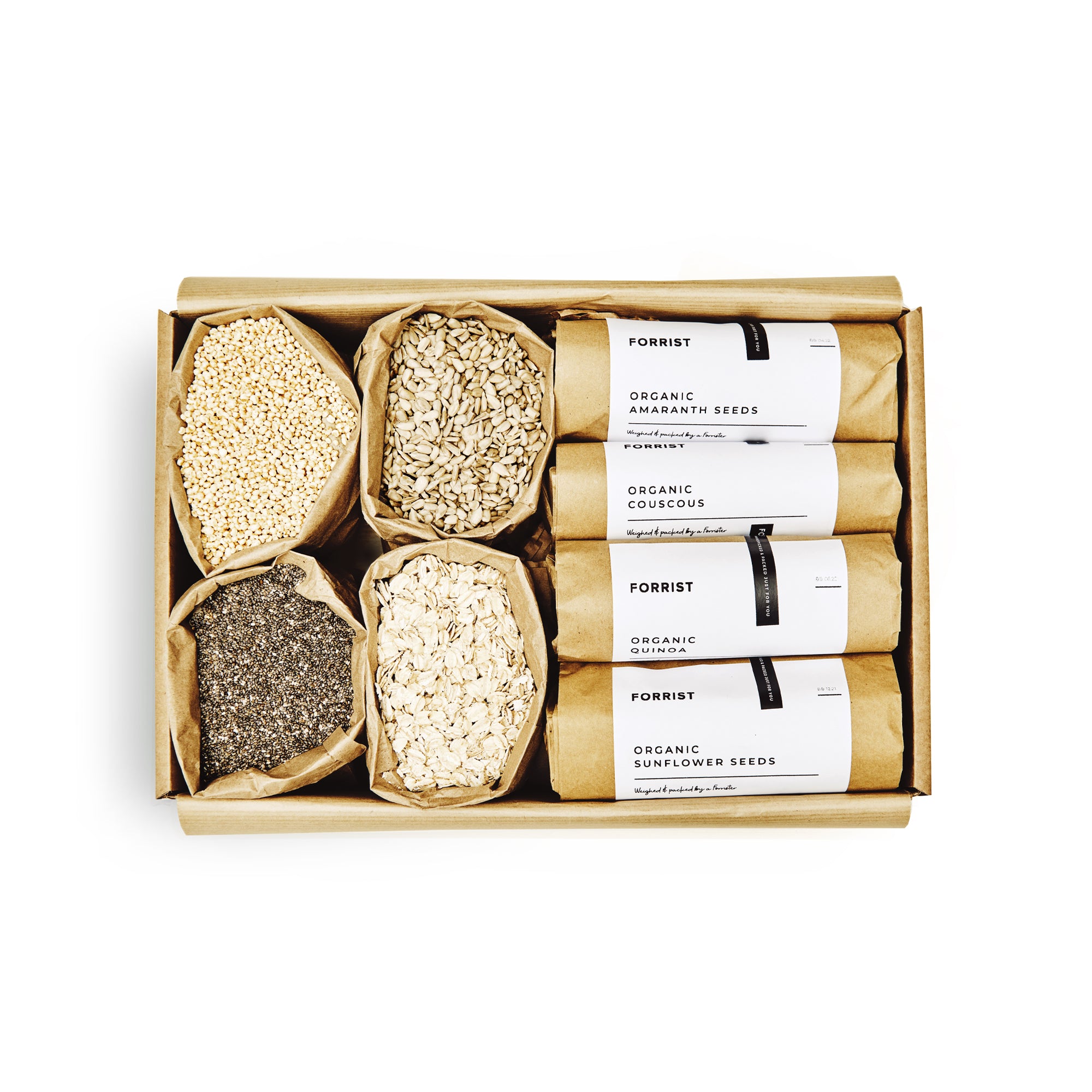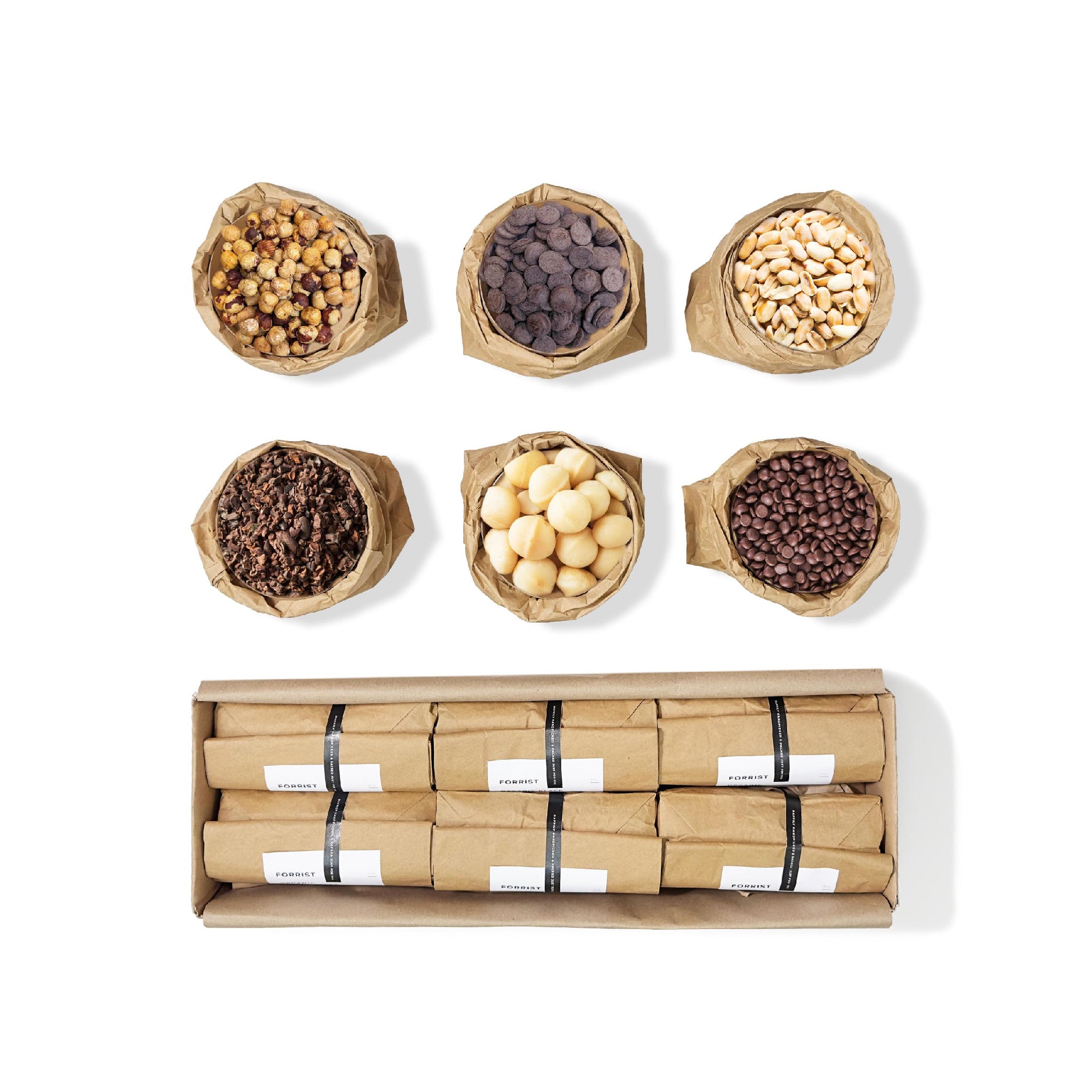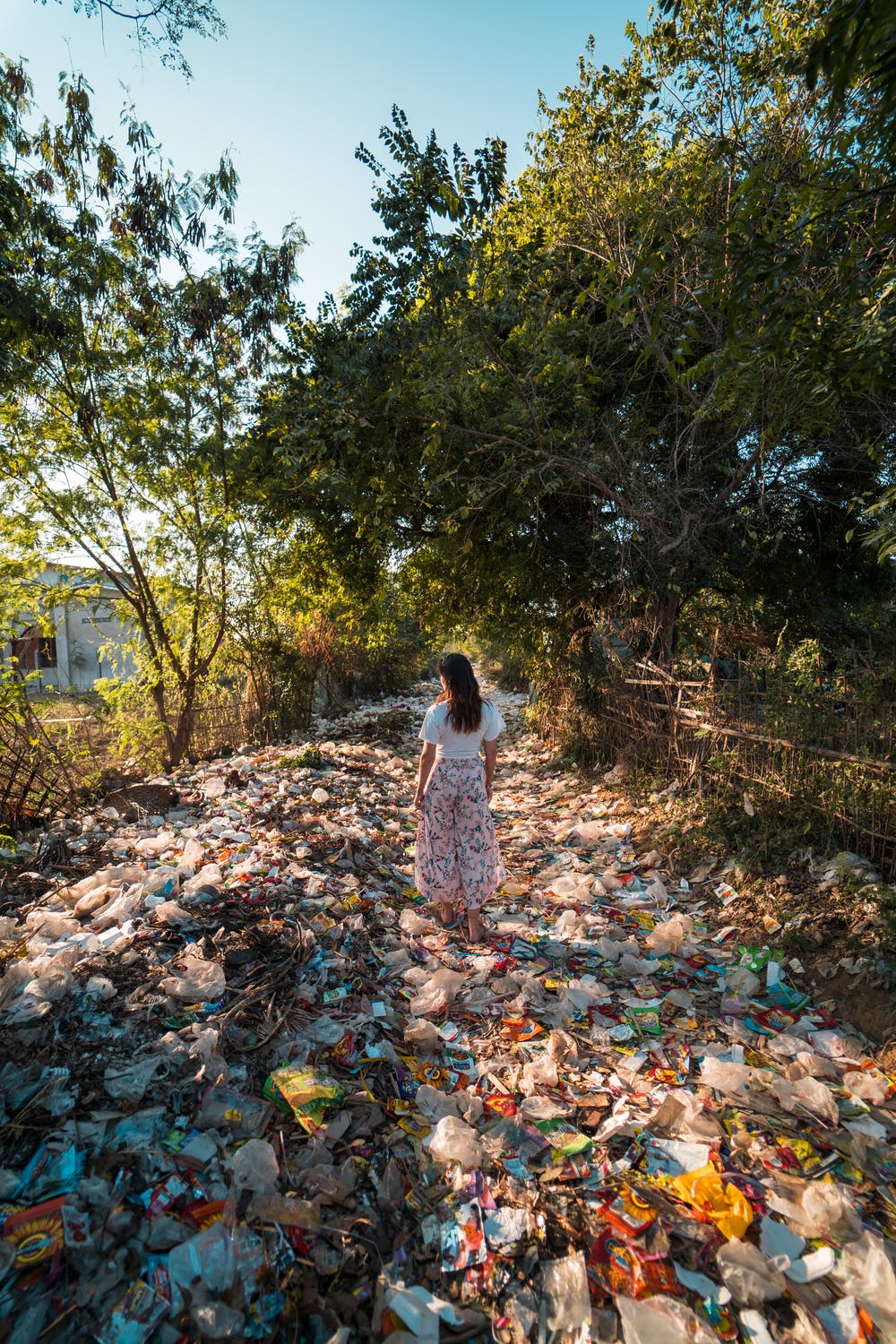
Zero Waste Explained
Nothing in the Forrist goes to waste. But what exactly does zero waste mean? And how achievable is it? Can we really build a system in which nothing is wasted? The fact of the matter is, we sure can! And when you think about it, it makes total sense! Continue reading, and we’ll explain how and why a zero waste approach, from an industry level to a personal level is the kind of change that Earth deserves.

What is zero waste?
The term zero waste encompasses a set of principles regarding waste prevention and the redesign of resource life cycles with the ultimate goal of everything in the industrial cycle being reused and having no material go to waste.
The Zero Waste International Alliance defines Zero waste as “the conservation of all resources by means of responsible production, consumption, reuse and recovery of all products, packaging, and materials, without burning them, and without discharges to land, water or air that threaten the environment or human health.”
It is an ecological approach which extends far beyond the recycling and reuse of waste materials, such as single-use plastics, as this system is simply not effective enough to combat the harmful effects of waste mismanagement and over-production - currently, only approximately 10% of plastic is actually recycled. Instead, it seeks to systematically reshuffle the flow of materials through society from top to bottom. This would be achieved through the regulation of product and packaging design, material selections and manufacturing processes, dedicated to the prevention of waste instead of just end-of-pipe waste management. In this way, it limits both waste and the unnecessary introduction of more materials in the cycle which would contribute to more waste. In an ideal zero waste system, material will be reused until the optimum level of consumption, and no waste will be sent to landfills, incinerators, or oceans.
How does Zero Waste work?
The idea of zero waste may sound impossible. How can we keep making products and not have any waste leftover at all? Where does everything go? But, when you really think about it, the answer is quite natural. It is simply a matter of reframing the way we view the life cycle of a product, and stepping away from the flawed ‘cradle-to-grave’ industrial model. ‘Cradle-to-grave’ is the typical framework used in the production of things. It is a linear model, covering a products life cycle from its beginning to its (unnecessary) end - from extracting materials from their “cradle”, manufacturing them into products which serve a particular purpose, and then after its use is exhausted, burying it into a “grave”, i.e. a landfill, where it becomes waste.
The zero waste approach proposes an alternative, ‘cradle-to-cradle’, which involves using materials that can entirely re-enter a new life cycle once they have served their purpose through composting, recycling, etc., meaning there is no “grave”, they are continuously re-introduced into the production cycle. Theoretically, this is a completely sustainable, closed loop industrial cycle. Some even describe it as our way of restoring the cycle of nature - our industrialised version of the circle of life. Where organisms take what they need from the Earth and their waste is then redistributed through its ecosystem to provide nourishment for the growth of more of Earth’s resources, we too can circulate materials through these closed loops, providing consistent nourishment for both nature and industry. Materials which are taken from the earth to create products are reborn as new products, or return to the Earth to supplement the growth of new products, thereby eliminating both waste, and reducing the need for more materials to be produced from exhaustive resources. William McDonough & Michael Braungart, the conceptualisers of this system, believe that it proves the destructive effects of our industrial system are the result of poor design, not the inevitable outcome of consumption or economic activity. And through scrapping the flawed, wasteful cradle-to-grave model and implementing the more natural, principled cradle-to-cradle system, the making and consumption of things becomes a regenerative force, where growth is good and human activity generates a restorative ecological footprint.
Now, to many, this just sounds like plain old recycling: turning waste into new products. And essentially it is. Recycling is a key component to the cradle-to-cradle strategy. However, it is more principled than that. As previously mentioned, this is not a waste management system, it is a waste prevention system. Instead of waiting for the materials at the end of its cycle and trying to pump as much of it as possible back into a new production cycle in order for it not to go to waste, this system regulates the production of things from top to bottom, so that 100% of what is being put out can safely return and be repurposed in its entirety. Thereby, the most crucial factor in successfully implementing this system is the strict consideration and regulation of the materials we are using, and how effectively they can be renewed, ensuring that every material and the methods by which they are extracted and manufactured are entirely sustainable.
One of the main reasons the current recycling system is so ineffective is because many of the materials we are trying to recycle are unsustainable. Whether it be the mixed material make-up, how easily they are contaminated, or the fact that they diminish in quality each time they are recycled until they eventually become useless and tossed to landfill – these factors make many commonplace products very difficult to properly recycle. Instead, this system would ensure that only the most sustainable materials are used, falling under two categories - technical nutrients and biological nutrients. In the most basic terms, technical nutrients are inorganic and should be recycled so that they can be reintroduced into the industrial cycle, whereas biological nutrients are organic and should be composted so that they can be reintroduced into the natural cycle.
For the most part, natural biological nutrients don’t pose much of a problem, as once they are thrown into soil, they will decompose on their own. It is the inorganic materials where the choice becomes more crucial. All technical nutrients should be non-toxic, non-harmful synthetic materials that have no negative effects on the natural environment, and maintain their integrity and quality indefinitely, so they can be recycled easily and constantly instead of being "downcycled" into lesser products, ultimately becoming waste. There is an ever-growing selection of high-quality polymers, fibres and metals which fit the bill, and once they are properly introduced into the production cycle, they can remain there unendingly. Another good way to help practically implement such a change is to take products which are commonly manufactured with poor technical nutrients and replace them with biological nutrients, like packaging and toiletries.
In order to enforce this standard, most agree that legislative measures are necessary, and it will take government involvement to effectively influence and maintain this positive change. One of the most commonly proposed methods is to tax unsustainable materials, so that manufacturers are incentivised to use eco-friendly alternatives which would not be taxed in the same way. Eventually, a shift in demand and industrial structure would see sustainable materials become more accessible, and thereby cheaper, eventually becoming the norm. Unfortunately, without a profit incentive, it is hard to imagine companies on a wide scale would dedicate themselves to such a change. But, although this should be far from the priority, this incentive may already exist…

Why strive for zero waste?
Even without taxing or government interference, as it stands, the correct application of zero waste practices could prove to be fruitful for industries. Sticking with the view that wasteful, cradle-to-grave industrial cycles are poor design, this means they are, in turn, poor business too. The model is centred around the expensive extraction of materials and the wasteful disposal of them. If we see those materials as an investment, then the single use and subsequent discarding of them makes for a terrible return on investment when these materials can still be re-used and re-sold. By repurposing the materials which they are already spending money on, they get more bang for their buck, spending less than if they were continually extracting new material, and they don’t let valuable material needlessly go to waste. In this way, the reduction of waste could result in the reduction of costs.
Additionally, a zero waste strategy could also prove to be a faster, more dynamic production process too. If waste is a sign of inefficiency, then zero waste surely represents the most efficient system. Because the cradle-to-cradle model minimises the need to source and extract new, raw materials, instead refunneling already existing materials back into the production cycle, it can theoretically cut out this costly, time and energy consuming process entirely. It is also much easier to repurpose existing products made from high-quality technical nutrients which maintain their integrity than it is to repurpose unsustainable materials which grow weaker and less viable each time they are recycled, leading to more high-quality products being produced easier and faster. It takes 20x less energy to make an aluminium can, for example, from recycled materials then it does from raw materials, reducing cost, effort and pollutant emissions.
Overall, in a bid to encourage this positive change, it is important to dispel the idea that zero-waste strategies are a hindrance or an additional cost to industries and businesses, and realise that, in fact, not only are they viable, they are also profitable, productive and overall make for more prosperous business.
Zero-waste is obviously centred around a much larger goal though, and although it encourages the maintenance and healthy growth of industries, its main purpose is of course the maintenance and healthy growth of the environment. It’s no shock to anyone that both the over-extraction and manufacturing of materials, as well as the piling up of landfills, is damaging our planet. It’s currently estimated that 42% of the world’s greenhouse gas emissions stem from the production and use, or rather misuse, of goods. Extraction methods like tree-felling, mining and oil-drilling cause mass pollution, and the emission of methane from landfills contribute towards global warming. Also, if not properly managed, leachate liquid which builds up in landfills can contaminate nearby soil and water supplies. This is essentially the equivalent of letting sewage leak into fresh water supplies. There is also the logistical problem of space, as we are simply running out of landmass, and we soon won’t have enough to continue stuffing the Earth with rubbish at the rate that we do, regardless of whether or not it’s sustainable. Most of the waste which ends up in landfill won’t breakdown for hundreds or thousands of years.
And this is assuming that all of our unrecycled waste ends up in managed landfills. In reality, large quantities of it is littered and, most notably, ends up in waters. This problem has become so drastic that trash islands are beginning to form in our oceans. There are currently five of these gargantuan garbage patches in our oceans which, if they were to be counted as countries, would be in the top 15 largest countries in the world by total landmass, replacing countries like Saudi Arabia and Mexico. The largest, the great pacific garbage patch, is reportedly three times the size of Texas. And the scariest part is that this is only the waste which floats on the surface, which accounts for only 15%, the other 85% lies beneath the ocean. This is cataclysmic for marine eco-systems, killing over a million animals each year. It is believed that, today, an average sea turtles’ diet can be made up of just under 75% plastic. And we humans face a similar consequence, as microplastics get passed down into the seafood and sea salt we eat. It is believed that the average human consumes a credit card’s worth of plastic every week. Through the use of closed-loop zero waste strategies, none of this is necessary. We won’t have to toss trash into landfills or our oceans, as we won’t have any trash, only nutrients, to be healthily repurposed into the industrial cycle or into nature.
At the end of the day, it’s all about sustainability, and a zero waste strategy would satisfy what is largely considered the three pillars of sustainability – environmental, economic and social. It minimises the need for ecologically harmful production cycles and eradicates waste, keeping us, the Earth, and its wildlife safe and healthy. Economically, it makes for smarter, more efficient business by reducing the cost of sourcing new materials, maximising the return on investment, and providing quicker, easier production methods for manufacturers, reducing the cost, effort and pollution involved in the whole process. And last of all, it’s more socially sustainable, as a conscious approach to the consumption and re-distribution of products comes hand in hand with an understanding of who is using them, making it more manageable to provide necessities for everyone and address social inequities. A zero-waste attitude also extends to the food we consume, and so with less food going to waste, more food becomes available for those who need it. Additionally, it protects the health and wellbeing of people, by reducing the harmful chemicals in the air we breathe as well the amount of microplastics which end up in our food, and diminishing the need for potentially dangerous landfill sights extending closer to residential areas where they are at risk of contaminating the air and water, or even exploding or setting on fire. Similarly, the reduced need to source more materials minimises the risk of industry encroachment on indigenous areas in order to fell trees, mine or otherwise take resources from the land, which would put the people and wildlife who live in these places in jeopardy. Not to mention, reducing, reusing and recycling provides ten times more jobs than waste disposal.

Nothing in the Forrist goes to waste
It’s all well and good to tell you why zero waste strategies are the bees-knees, but what are we doing here at Forrist to walk it like we talk it? Quite a lot actually! We are dedicated to waste-free conscious shopping. That’s why we only use completely sustainable packaging. That means no plastic in sight! We package your orders in kraft paper bags which are 100% compostable, and also give you the option to reuse your old containers when shopping with us, so that you can refill your products without the need for new containers. And the same goes for our products, 98% of everything we sell is recyclable or compostable, and we are constantly aiming to close that final 2% gap in order to become completely zero waste. We also allow you to shop by weight when buying your groceries, so that you are only getting as much food as you need and nothing has to go to waste.
So, there you have it, zero waste. Now, it’s up to you to take on this approach to the best of your ability, by consciously consuming sustainable products and reusing, recycling or composting them in the proper way. It may not seem like much, but each small effort is another step closer to a waste-free future!
















